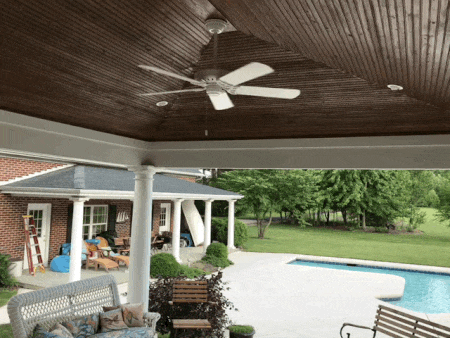Ceiling fans: Direction, energy consumption, old vs new?
Posted By RichC on August 13, 2019

Great energy use tip for those of use who heavily rely on ceiling fans:
The direction a ceiling fan should turn can be confusing. Modern fans have a switch that enables them to blow the air either up or down. During the summer you want the fan to blow air straight down, so your ceiling fan needs to run in a counter clockwise direction as you look up at it so you can feel the breeze. But remember, fans consume energy, so the only way a fan will actually help lower your bill is to set your thermostat a degree or two higher when using ceiling fans. The breeze from the fan makes you feel cooler at a higher temperature. Just be sure to turn fans off after you leave the room since they do not actually lower the room temperature.
Don’t choose a higher speed than necessary to feel comfortable. The higher the fan speed, the more energy it uses. A typical modern ceiling fan uses about 30 Watts on low speed, 55 Watts on medium speed and 95 Watts on high speed.
Do you still have any of these heavy-duty ceiling fans from decades ago? You know the ones; they seem to last forever. Did you know they can use up to 500 Watts on high speed? If you use that fan several hours a day, you should seriously consider replacing it with a modern fan to cut your energy costs up to 80 percent.
Comments